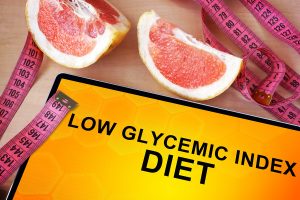2018 may be seen as a Battle of the Diets year, as it also has been a year of growing interest in viewing diet “quality” through a different lens. Researchers and health professionals are moving beyond defining eating as healthful based on a particular component — such as sugar content, fat type, or organic certification – and increasingly paying attention to a broader consideration of what diet quality means.
The challenge: how do we pull together a common definition of diet quality to guide consumers in making healthy food choices and for researchers in studying how diet quality affects risk of cancer and other diseases?

Defining Quality in Food
Food labels feature the Nutrition Facts panel that identifies content of a range of key nutrients. But such information can sometimes be conflicting or by itself insufficient in order to set priorities in making food decisions. For example, if one product is higher in sodium, another higher in added sugars, and another a better source of fiber, which to select? And how important are other aspects of how a food is produced in its contribution to diet quality?
Different definitions and priorities for food quality can lead us to make different food choices in an effort to create a healthy diet.
The NutriScore label
The Nutriscore label is now slated for use in three European countries. It classifies foods and drinks in one of five categories of overall nutritional quality, which is indicated on the front of packages using a color scale. The goal is to provide a more easily used guide to healthful food choices. The rating is based on scores for how fiber, protein, fruit, vegetable, legumes and nut content compare to recommendations, versus scores for how calories, saturated fat, sugar, sodium content compare to recommended limits.
Defining Quality of Overall Diet
Research increasingly ties health with quality of overall eating patterns, more than individual foods or nutrients. But defining exactly what that means is easier said than done. Several scoring systems have been developed; while they are similar, each has a unique vantage point.
Scoring systems give points for including a large proportion of food choices that are healthful, without overly penalizing limited amounts of less healthful foods.
A high-quality diet gets a larger proportion of its calories from more healthful foods. That’s the concept behind an index which puts total scores of all food consumed (as defined by the system on which the NutriScore labels are based) in the context of total calories. In a recent study of almost 500,000 adults from 10 European countries, after 15 years of follow-up, index scores suggesting worse diet quality were associated with greater risk of several specific cancers and overall cancer compared to scores suggesting better diet quality.
A high-quality diet includes food choices and amounts that combine to meet recommended goals and limits. The Healthy Eating Index (HEI) is a scoring system that evaluates how well a diet meets the Dietary Guidelines for Americans. A new HEI was released in 2018 to reflect the latest edition of these guidelines. Highest compared to lowest scores on the new HEI, its predecessor and a modified version are all associated with 13 to 25 percent fewer deaths from cancer and cardiovascular disease.
A high-quality diet helps achieve and maintain a healthy weight. Excess body fat — especially deep in the abdomen – can trigger inflammation and hormonal changes that lead to type 2 diabetes, heart disease and cancer. Avoiding unhealthy weight gain is a central recommendation to reduce risk of all three diseases. As long as a diet is high in vegetables, fruits and dietary fiber, it can include reasonable amounts of healthful fats like olive oil, nuts and seeds and still support a healthy weight.
Even with healthful foods, overdoing portions, eating all day, or spending too much time being sedentary can all lead to unhealthy weight gain. The controversy continues over what dietary approach is best for managing weight – or more likely, which one is best for whom. But with all that we are learning about the effects of excess body fat, a high-quality diet has to provide enough of what promotes health, limit components that are unhealthy, and support a healthy weight.






After reading this blog.I see where I need drastic changes. I was diagnosed with Stage 1 A breast cancer this year. I am trying to figure out where to start.
Thanks for the suggestions.
It’s a beautiful post. We can make healthy weight changes with proper nutrition and a tailor-made diet program. Thanks for the information